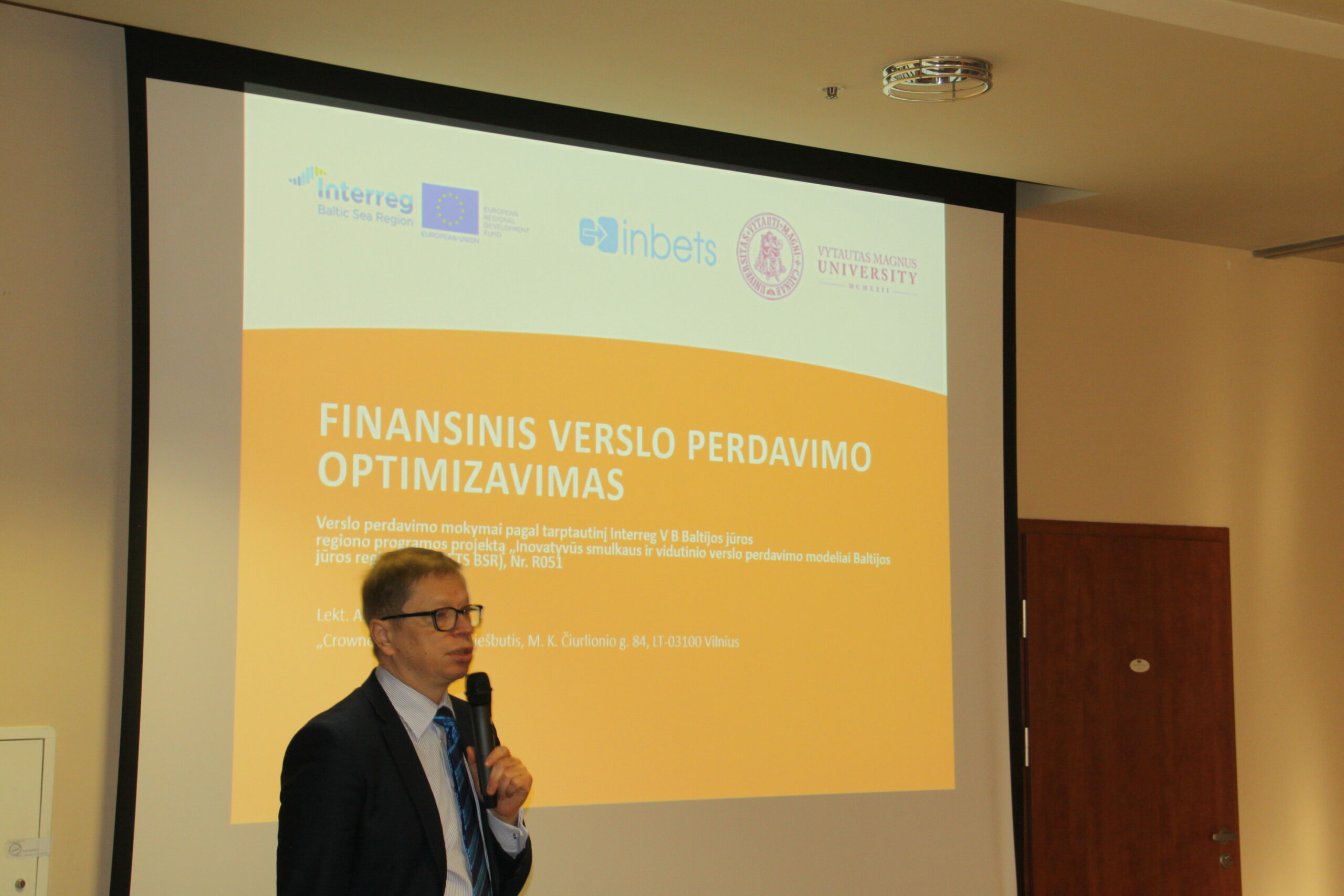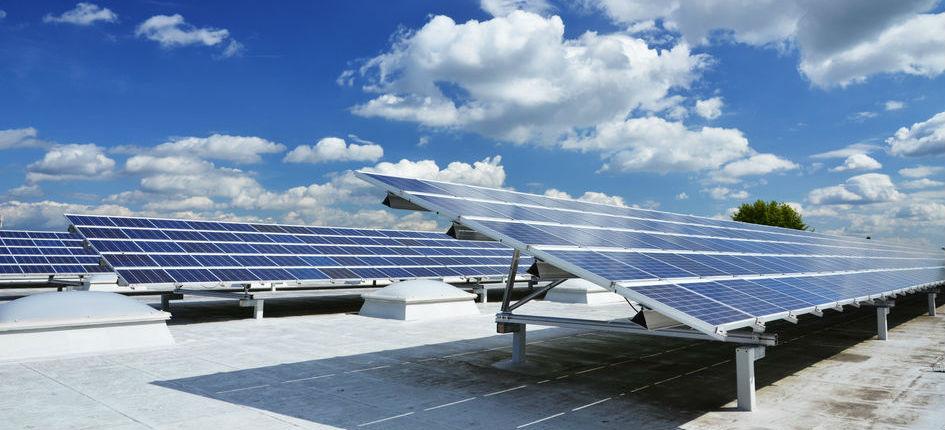Business Transfers – Lithuania, Europe, INBETS
Have you ever wondered that in Lithuania many businesses were established at the beginning of the dawn of freedom in 1990s, so they have been operating for about 30 years already! We can be proud that many businesspeople have managed to cultivate solid and stable businesses that ensured a steady income and created stable jobs for Lithuanian citizens. A handful number of Lithuanian businesses have successfully expanded in Europe and other international markets, grown their capacities, have been successfully sold or their shares have been traded on the stock exchange, however, many of them continue to operate in the hands of the same owners. Keeping in mind their age, many of businesspeople are or will be facing the dilemma of business transfer and continuity in the near future.
This topic will become especially relevant for family businesses that, for one reason or another, have not developed a business successor within the family. There are many reasons for that – first of all, not every child wants to follow their parents’ footsteps. Without a proper successor, there is a need to attract professionals from the outside and even think about selling the business. Audrius Zabotka, an expert of business transfers and succession, says: “Looking inside of successfully developed businesses, we see that there is no one-fits-all scenario – some business owners transferred businesses to successors, others relied their business development on outsourced professionals. In any case, every family business founder had to address the question of how to ensure the continuity of the business – entrust its management to family members, who could and would like to further expand it, or, perhaps, sell the business to unrelated buyers. And such an issue will have to be addressed in the coming years by many family businesses set up in the early days of restoration of independence in Lithuania. There is no one right answer what to do in this situation because each business situation is individual and unique. However, in order to keep a business running successfully, it is necessary to identify the issue of business transfer and this issue must be perceived by the business owner as a significant and task that need a lot of focus and timely decisions.”
“Preparation for business transfer is not a few days job – a properly planned and implemented business transfer process can take 3-5 years. After all, to prepare a business for sale or transfer, it is necessary to properly arrange and prepare not only documents and administrative part, but also business processes. If a potential business successor lacks the necessary competencies, it is expedient to create a training and education plan, find a business transfer form suitable for both parties, transfer the accumulated experience, know-how, contacts, etc.,” notes A. Zabotka.
In a time of economic crisis caused by pandemics, business owners and managers must first and foremost address the issues of business liquidity, continuity and survival issues. However, the development of a business transfer strategy should not be postponed to the distant future, as life is full of surprises, and sometimes, unfortunately, unpleasant ones. Imagine that the sole owner (shareholder) of a business, as well as the manager of a company, dies unexpectedly. If he or she was the only person authorized by the company in state institutions, as well as the only person with the right to sign documents, then the business will face high survival issue, as legal inheritance proceedings can take up to 3-6 months. In that case only one question matters –will business be able to survive for such long period without the head of the company, without the possibility to conclude or adjust contracts, make transfers in banks, fulfil their obligations to suppliers and creditors, pay salaries to employees, etc.
Over the next decade, 500,000 businesses in the European Union will face business transfers each year. Those businesses are creating jobs for more than 2 million Europeans. Unsuccessful or failed business transfers cost not only for business owners and their families, workers, but also for states, as lost jobs increase rates of unemployment, increase the need for social benefits and reduce tax revenues.
In 2011, European Commission published “Business Dynamics” study, where was estimated that 150,000 companies with 600,000 employees are being lost in Europe each year as a result of failed business transfers. It is worth to mention that business transfer in the European Union has already become acknowledged as essential issue and has some targeted funding. The project “Innovative Business Transfer Models for Small and Medium-Sized Enterprises in the Baltic Sea Region” (INBETS BSR), funded by the EU Interreg Baltic Sea Region Program, is one of the examples of such funding and one of the first focus point in Lithuania. The project is being implemented with partners from countries around the Baltic Sea region (lead partner – Baltic Sea Academy (Germany)) with two partners from Lithuania – Vilnius Chamber of Commerce and Industry and Vytautas Magnus University. “Vilnius Chamber of Commerce, Industry and Crafts unites more than 500 businesses, including family businesses. Seeing the problem of business continuity in Lithuania and the lack of due attention to it, the Chamber was actively involved in the implementation of the INBETS BSR project, which aims not only to develop the most effective models of business transfer, but also to contribute to the business support system, which is needed to better identify and understand business transfer issue and purposefully fund its solutions, ” notes the Vilnius Chamber of Commerce, Industry and Craft general director dr. Almantas Danilevičius.
– Written by the Vilnius Chamber of Commerce, Industry and Crafts
Who can help
Business transfer institutions Lithuania
Info LEU
Public Institution Lithuanian Business Support Agency (LBSA) is a non-profit institution established by the Ministry of Economy for the purpose of administering European Union (EU) support and co-financing funds. As the executive institution in the structure for the administration of EU funding in Lithuania, LBSA administers EU funding granted for the development of Lithuanian business, R&D, tourism, and the energy sector.
Business transfers can be also financed by commercial banks, credit unions, investment firms and other financial or credit institutions.
“Invega “ (National promotional institution) through the application of innovative and effective financing models and instruments designed to provide financial and other services to businesses. Invega manages financial instruments designed to help with starting up or expanding a small or medium-sized business, i.e. soft loans, loan guarantees, interest rate subsidies, and support for the first job. The Entrepreneurship Promotion Fund instrument offers the best conditions for newly established and young businesses. Invega cooperate with the banks, that grants loans from the Open Credit fund towards for business development (both investment and working capital loans). Invega also helps facilitate access to finance for SMEs by guaranteeing to financial intermediaries the repayment of up to 80% per cent of the first loan part. The bank secures the repayment of the remainder of the loan with collaterals offered by the enterprise
Through the subsidy schemes (Global Grant measures). Invega subsidise for companies portion part of the interests paid. Businesses can make use of the opportunities offered by the Interest rate subsidies instrument to cover up to 95% per cent of the interests paid on loans both guaranteed and not guaranteed by Invega.
Support for the First job provided for employers companies on the employees who employed for the first time, workers with no prior work experience. may be reimbursed some of the salary costs Part of the salary costs associated with the first-time employed young person (up to 23.3 per cent from the salary calculated). are reimbursed.
Special support programmes for training and mentoring on including business transfers topics, are not available in Lithuania eitheramong subsidy measures administered by INVEGA, however such mentoring/training topics are not so popular yet.
Invega is the main public investor into the private equity, venture and early stage capital funds. Invega also has the daughter company UAB “Kofinansavimas”, that is managing several Co-investment funds, investing alongside business angels into start-ups and growing SMEs, commercialisation of ideas generated in scientific and research institutions through the implementation of research, development and innovation (R&D) activities.
Financial support can be received only for general business consultations according to EU structural assistance measures. But they are targeted at other aims of business development more.
A certain proportion of EU structural assistance is used to finance public services for business.
Agency for Science, Innovation and Technology (MITA)
It is the main governmental institution, responsible for implementation of innovation policy in Lithuania.
MITA provides free of charge services for clients from business, science and public sectors, interested in possibilities to develop strong cooperation relations with international partners and get financial support for research and innovation projects.
The main activity is the coordination of national activities and international programmes (HORIZON2020, EUREKA, EUROSTARS) of research, technological development and innovation and other financial schemes (innovation vouchers, protection of industrial property rights). MITA provides national financial support for projects participants.
MITA also promotes business and science cooperation, commercialization of research and protection of intellectual property rights.
Public Company “Versli Lietuva“(Enterprise Lithuania) has been playing a considerable role in business consultations and search for business partners. It is a non-profit agency under Ministry of Economy established to promote entrepreneurship, support business development and foster export. Enterprise Lithuania is a reliable adviser and assistant for start, growth and export of national businesses with focus on SME’s.
Below is a visual respresentation of the Regional business transfer support cooperation structure – Structure – Info LEU






















